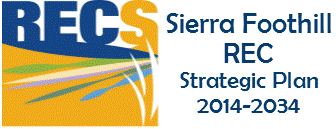Managing Rangeland Soils for Carbon Sequestration
Principal Investigator: Whendee Silver
Rangelands hold considerable potential to sequester carbon in soils and vegetation. Our research on Nicasio Native Grass Ranch (Nicasio) and the Sierra Foothills Research and Extension Center (SFREC) has shown that composted green waste can increase plant carbon capture, forage production, and soil carbon sequestration when added to rangeland soils (Ryals and Silver 2013, Ryals et al. 2014).
We developed a life cycle assessment model that accounts for the carbon costs and benefits of this land use practice when compared to other common management strategies (DeLonge et al. 2013). The model showed that compost amendments can result in significant carbon offsets in addition to the field-scale carbon gains.
We also used the DayCent biogeochemical model to explore the long-term impacts of compost amendments, as well as the effects of different management approaches and climate, on carbon and greenhouse gas dynamics (Ryals et al. submitted). Results from the DayCent model suggested that carbon sequestration would continue for up to three decades following compost additions. The model also predicted higher nitrous oxide emissions than were measured in the field.
For the next phase of this research we will examine the effects of organic and inorganic amendments on nitrogen cycling, greenhouse emissions, carbon sequestration and plant community composition. We will use a combination of field, laboratory, and modeling studies to determine the controls on carbon and greenhouse gas dynamics under a range of environmental and management conditions.
Click HERE to access more information on this project





